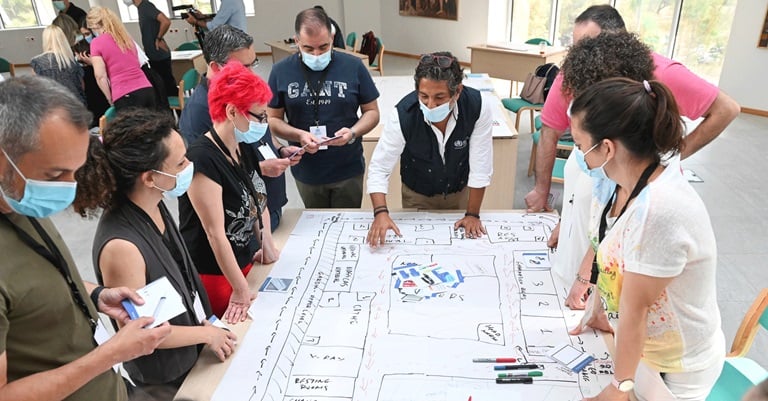

Compendium of WHO and other UN guidance on health and environment

Guidance on priority settings for action
- Cities and other urban settlements
- Housing
- Workplaces
- Health care facilities
Cities and other urban settlements

Urbanization is one of the leading global trends of the 21st century that has a significant impact on health. Over 55% of the world’s population live in urban areas, a proportion that is expected to increase to 68% by 2050. As most future urban growth will take place in developing cities, this provides policy-makers with a unique opportunity to guide urbanization and other major urban development trends in a way that protects and promotes health.
Housing

According to UN-Habitat estimates, about 3 billion people – or 40% of the world’s population – will need access to adequate housing by 2030. This creates a need for 96 000 new, affordable and accessible housing units every day. Access to safe and healthy housing is a human right and one mechanism through which social and economic inequalities translate into health inequality.
Workplaces

More than 1.2 million deaths annually (2015 data) are estimated to be caused by occupational risks. Large gaps persist with regard to the health status of workers and their exposure to occupational risks. In addition, only a small minority of the global workforce has access to occupational health services. Nevertheless, effective interventions to prevent occupational hazards and to protect and promote health at the workplace are available.
Health care facilities

Access to reliable and sustainable energy is a prerequisite for high-quality health care. Safely managed water, sanitation, access to basic hygiene facilities and adequate waste management are needed to maintain hygienic environments and prevent health care-acquired infections. Occupational health services need to protect health care workers in order to ensure health care delivery. Furthermore, the health sector can adopt a wide range of environmentally responsible practices when offering its health care and prevention services, and help protect and promote health through those practices.
Yet as many as 1 in 4 health care facilities lack access to even basic levels of water, exposing 1.8 billion people to greater risk of infections. In addition, 1 in 3 health care facilities lack hand hygiene at points of care, 1 in 3 do not segregate waste safely and 1 in 10 have no sanitation services (based on a 2020 global update from WHO/UNICEF which includes data for 165 countries).
Download the guidance on priority settings for action
Read more
Related health topics

